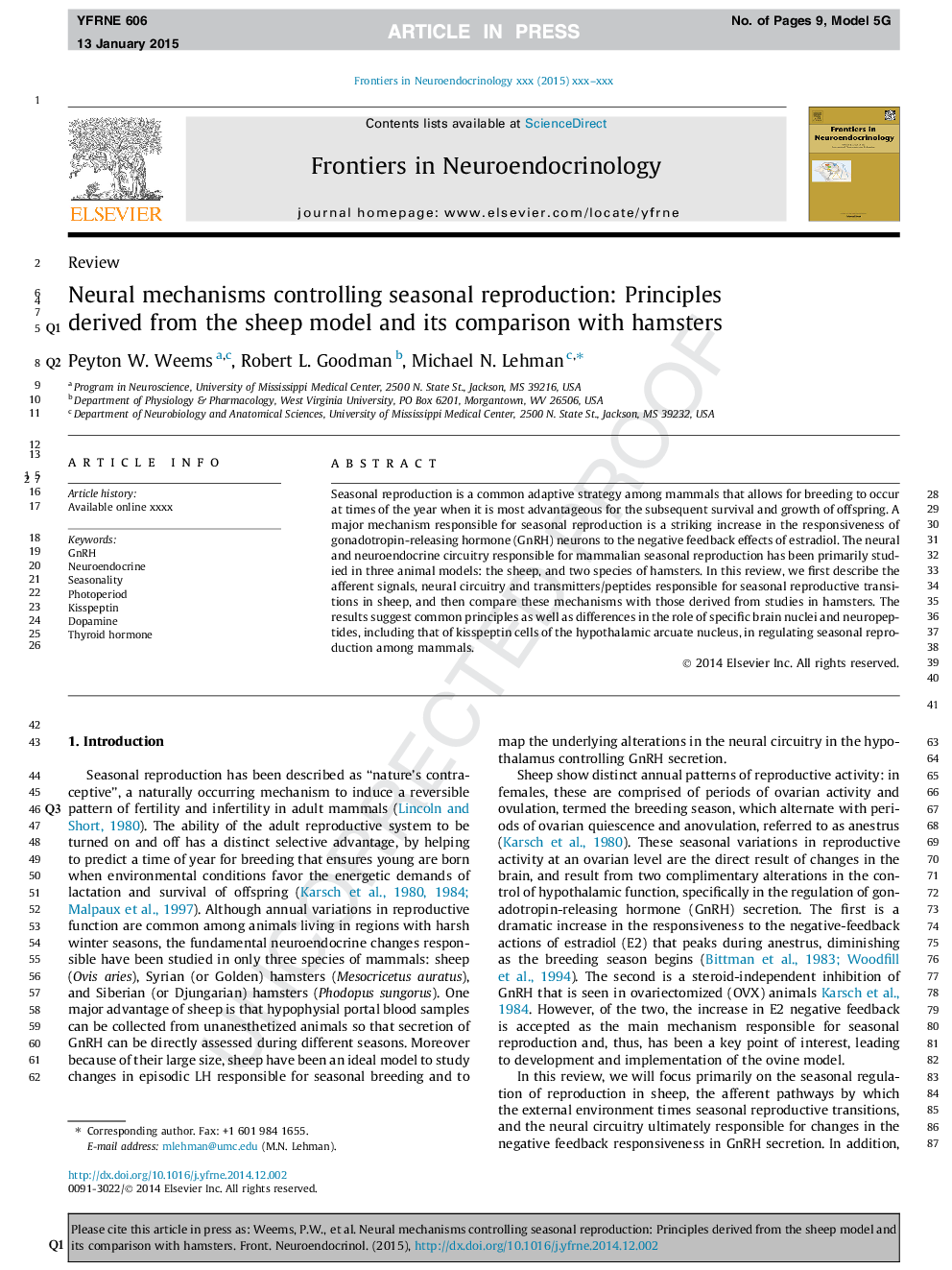| Article ID | Journal | Published Year | Pages | File Type |
|---|---|---|---|---|
| 5900642 | Frontiers in Neuroendocrinology | 2015 | 9 Pages |
Abstract
Seasonal reproduction is a common adaptive strategy among mammals that allows for breeding to occur at times of the year when it is most advantageous for the subsequent survival and growth of offspring. A major mechanism responsible for seasonal reproduction is a striking increase in the responsiveness of gonadotropin-releasing hormone (GnRH) neurons to the negative feedback effects of estradiol. The neural and neuroendocrine circuitry responsible for mammalian seasonal reproduction has been primarily studied in three animal models: the sheep, and two species of hamsters. In this review, we first describe the afferent signals, neural circuitry and transmitters/peptides responsible for seasonal reproductive transitions in sheep, and then compare these mechanisms with those derived from studies in hamsters. The results suggest common principles as well as differences in the role of specific brain nuclei and neuropeptides, including that of kisspeptin cells of the hypothalamic arcuate nucleus, in regulating seasonal reproduction among mammals.
Related Topics
Life Sciences
Biochemistry, Genetics and Molecular Biology
Endocrinology
Authors
Peyton W. Weems, Robert L. Goodman, Michael N. Lehman,
